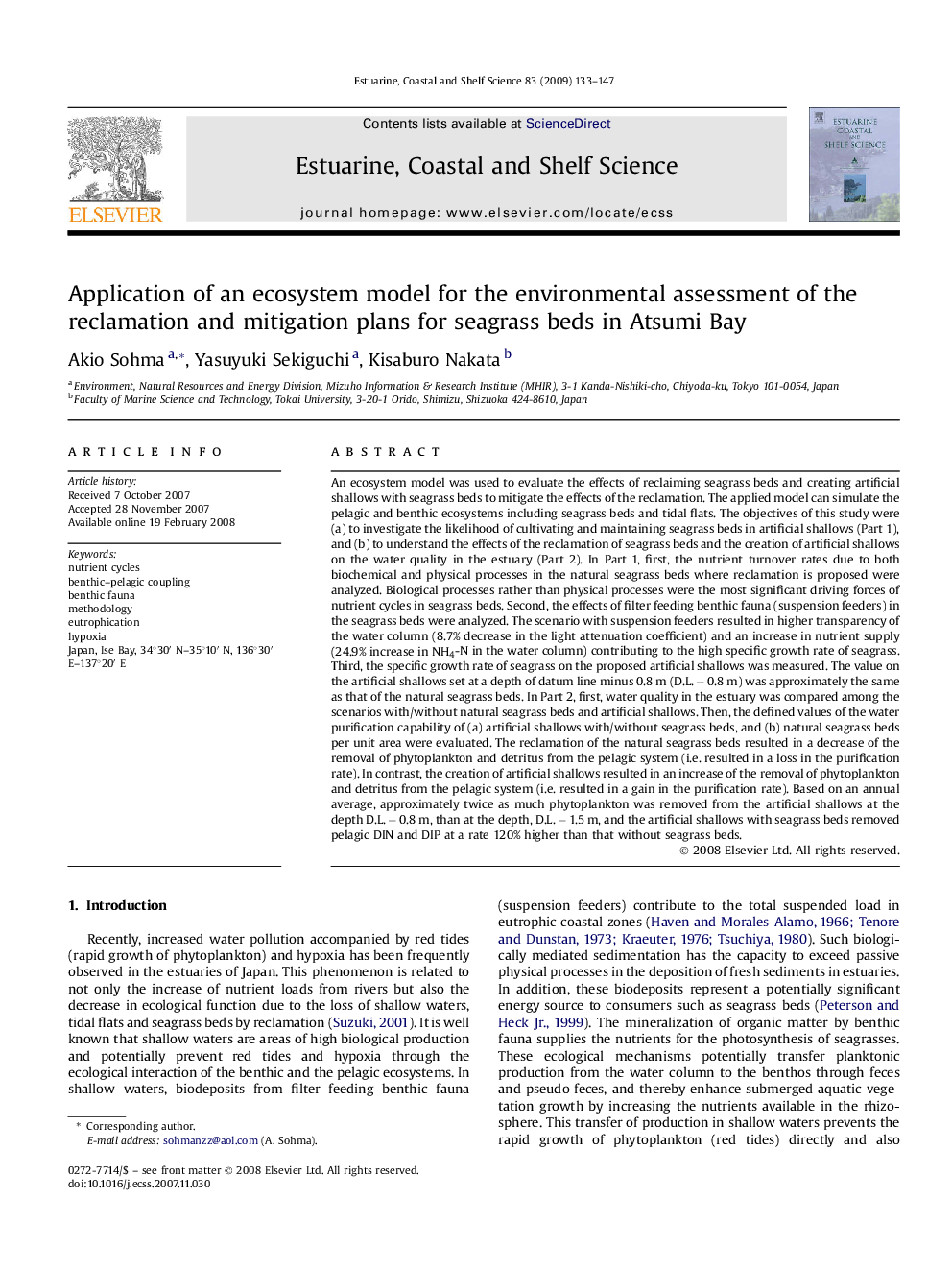| کد مقاله | کد نشریه | سال انتشار | مقاله انگلیسی | نسخه تمام متن |
|---|---|---|---|---|
| 4541297 | 1326717 | 2009 | 15 صفحه PDF | دانلود رایگان |

An ecosystem model was used to evaluate the effects of reclaiming seagrass beds and creating artificial shallows with seagrass beds to mitigate the effects of the reclamation. The applied model can simulate the pelagic and benthic ecosystems including seagrass beds and tidal flats. The objectives of this study were (a) to investigate the likelihood of cultivating and maintaining seagrass beds in artificial shallows (Part 1), and (b) to understand the effects of the reclamation of seagrass beds and the creation of artificial shallows on the water quality in the estuary (Part 2). In Part 1, first, the nutrient turnover rates due to both biochemical and physical processes in the natural seagrass beds where reclamation is proposed were analyzed. Biological processes rather than physical processes were the most significant driving forces of nutrient cycles in seagrass beds. Second, the effects of filter feeding benthic fauna (suspension feeders) in the seagrass beds were analyzed. The scenario with suspension feeders resulted in higher transparency of the water column (8.7% decrease in the light attenuation coefficient) and an increase in nutrient supply (24.9% increase in NH4-N in the water column) contributing to the high specific growth rate of seagrass. Third, the specific growth rate of seagrass on the proposed artificial shallows was measured. The value on the artificial shallows set at a depth of datum line minus 0.8 m (D.L. − 0.8 m) was approximately the same as that of the natural seagrass beds. In Part 2, first, water quality in the estuary was compared among the scenarios with/without natural seagrass beds and artificial shallows. Then, the defined values of the water purification capability of (a) artificial shallows with/without seagrass beds, and (b) natural seagrass beds per unit area were evaluated. The reclamation of the natural seagrass beds resulted in a decrease of the removal of phytoplankton and detritus from the pelagic system (i.e. resulted in a loss in the purification rate). In contrast, the creation of artificial shallows resulted in an increase of the removal of phytoplankton and detritus from the pelagic system (i.e. resulted in a gain in the purification rate). Based on an annual average, approximately twice as much phytoplankton was removed from the artificial shallows at the depth D.L. − 0.8 m, than at the depth, D.L. − 1.5 m, and the artificial shallows with seagrass beds removed pelagic DIN and DIP at a rate 120% higher than that without seagrass beds.
Journal: Estuarine, Coastal and Shelf Science - Volume 83, Issue 2, 20 June 2009, Pages 133–147